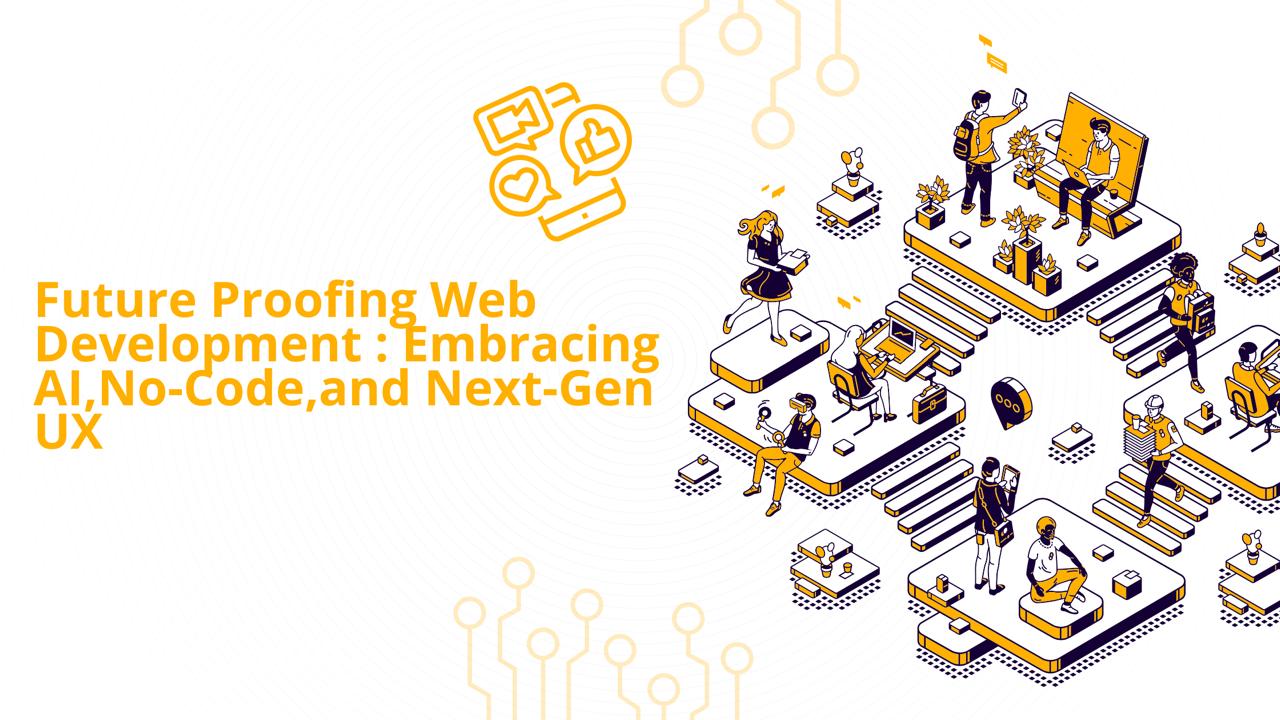
Future-Proofing Web Development: Embracing AI, No-Code, and Next-Gen UX
In a fast-paced digital era, web development is no longer just about clean code and responsive design. It’s about agility, automation, and delivering immersive user experiences. With the rise of AI, no-code platforms, and advanced UI/UX principles, developers and businesses must adapt to stay competitive and relevant.
1. AI in Web Development: From Automation to Intelligence
Artificial Intelligence is redefining how websites are built and function. From AI-powered design tools like Figma AI to intelligent chatbots, content personalization, and predictive analytics — smart features are now baseline expectations. Developers are leveraging tools like GitHub Copilot and AI-assisted debugging to speed up deployment and reduce errors.
Key Impact Areas:
Automated code generation
Personalized content delivery
Predictive user behavior analysis
AI-driven SEO optimization
2. The Rise of No-Code and Low-Code Platforms
Platforms like Webflow, Bubble, and Framer are enabling non-technical users to build powerful web applications. For developers, this shift is an opportunity to focus on high-impact customizations, integrations, and scalability while empowering clients to handle minor updates.
Why it matters:
Faster MVP launches
Cost-effective prototyping
Bridging the gap between design and development
3. UX is the New Differentiator
Next-gen websites are not just visually appealing — they are accessible, interactive, and emotionally engaging. Micro-interactions, immersive animations (using tools like Lottie), and inclusive design are pushing the boundaries of digital experiences.
UX Trends to Watch:
Dark mode and adaptive theming
Voice UI and gesture controls
Accessibility-first design principles (WCAG 2.2)
4. Headless CMS & Jamstack Evolution
Modern web architectures like Jamstack and headless CMS (Strapi, Contentful, Sanity) provide flexibility, speed, and scalability. Decoupling the front and back ends allows for smoother integration with APIs, better performance, and improved security.
5. Web 3.0 and the Decentralized Web
With blockchain integration, NFTs, and decentralized identities gaining traction, Web3 technologies are beginning to influence web development. While still emerging, developers should keep an eye on platforms like IPFS, ENS, and WalletConnect.
Conclusion: Evolve or Fall Behind
Web development is no longer static — it’s dynamic, intelligent, and constantly evolving. Staying ahead means embracing emerging tools, designing with empathy, and building with purpose. Whether you're a solo developer, an agency, or a product team — the future belongs to those who innovate, not imitate.


